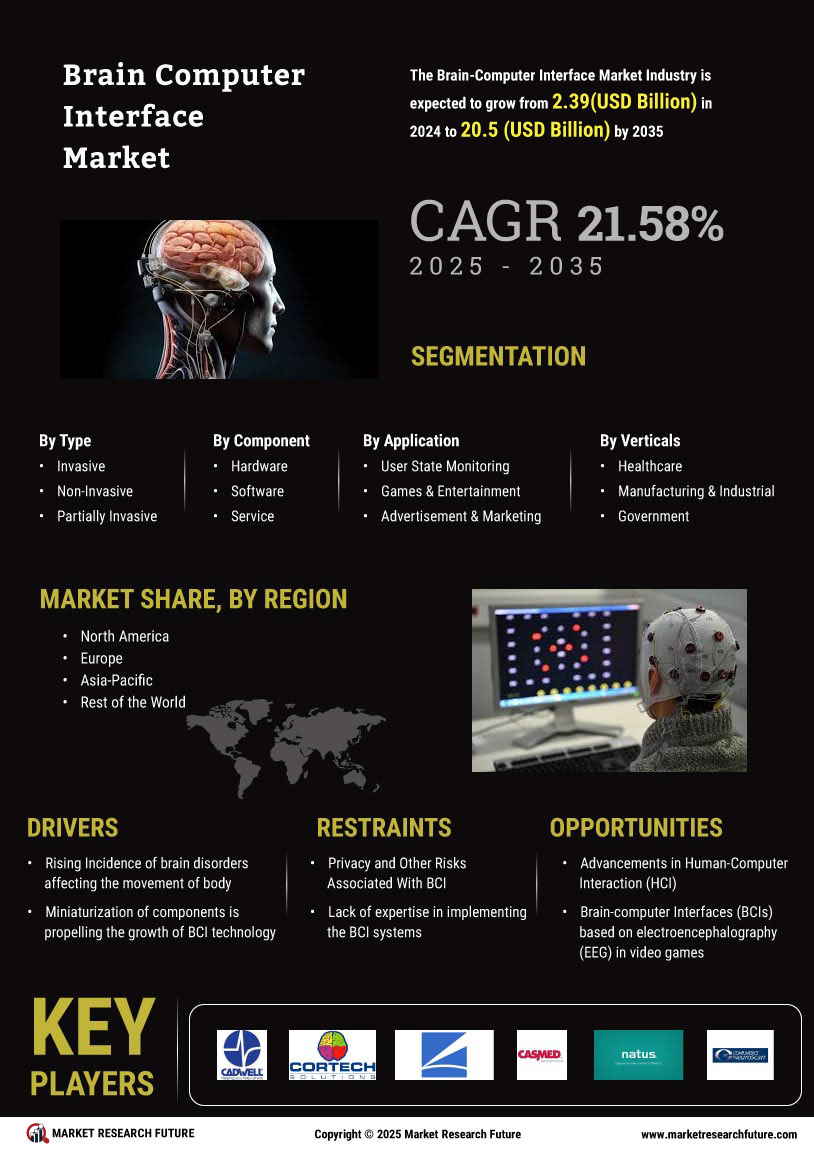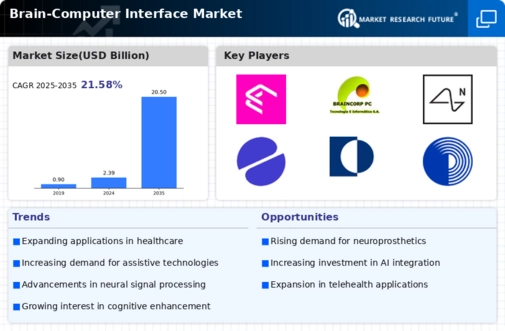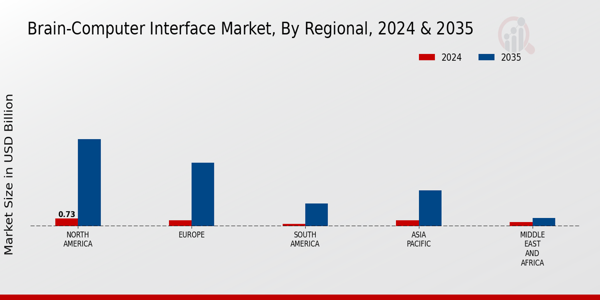Increased Investment
Investment in the Global Brain-Computer Interface Market Industry is on the rise, driven by both public and private sectors. Governments are recognizing the potential of BCIs for enhancing cognitive capabilities and addressing neurological disorders. For instance, funding initiatives aimed at research and development in neurotechnology are becoming more prevalent. This influx of capital supports startups and established companies alike, fostering innovation and accelerating product development. As a result, the market is likely to witness a surge in new entrants and technologies, further propelling its growth in the coming years.
Healthcare Applications
The Global Brain-Computer Interface Market Industry experiences substantial growth due to its applications in healthcare. BCIs are increasingly utilized for neurorehabilitation, enabling patients with motor disabilities to regain control over their movements. For example, systems that translate brain signals into commands for prosthetic limbs are gaining traction. Additionally, BCIs are being explored for treating neurological disorders such as epilepsy and depression. The integration of BCIs into therapeutic practices not only enhances patient outcomes but also expands the market's reach, as healthcare providers seek innovative solutions to improve quality of life.
Technological Advancements
The Global Brain-Computer Interface Market Industry is propelled by rapid technological advancements in neurotechnology and signal processing. Innovations in electroencephalography (EEG) and functional magnetic resonance imaging (fMRI) enhance the accuracy and efficiency of brain-computer interfaces. For instance, the development of non-invasive BCI systems allows for real-time communication between the brain and external devices, facilitating applications in gaming, healthcare, and rehabilitation. As these technologies evolve, the market is projected to grow from 2.39 USD Billion in 2024 to an estimated 20.5 USD Billion by 2035, reflecting a compound annual growth rate (CAGR) of 21.58% from 2025 to 2035.
Ethical and Regulatory Considerations
The Global Brain-Computer Interface Market Industry faces a complex landscape of ethical and regulatory considerations. As BCIs become more integrated into society, concerns regarding privacy, consent, and the potential for misuse arise. Regulatory bodies are tasked with establishing guidelines to ensure the safe and ethical use of these technologies. While this may pose challenges for developers, it also presents opportunities for companies that prioritize ethical practices and transparency. Navigating these considerations effectively could enhance consumer trust and acceptance, ultimately shaping the market's trajectory.
Growing Demand for Assistive Technologies
The Global Brain-Computer Interface Market Industry is significantly influenced by the increasing demand for assistive technologies. As populations age and the prevalence of neurological disorders rises, there is a pressing need for solutions that enhance communication and mobility for individuals with disabilities. BCIs offer unique capabilities, allowing users to interact with computers and other devices using their thoughts. This demand is not only driven by individual users but also by caregivers and healthcare providers seeking effective tools for patient support. Consequently, the market is poised for expansion as these technologies become more mainstream.




















Leave a Comment